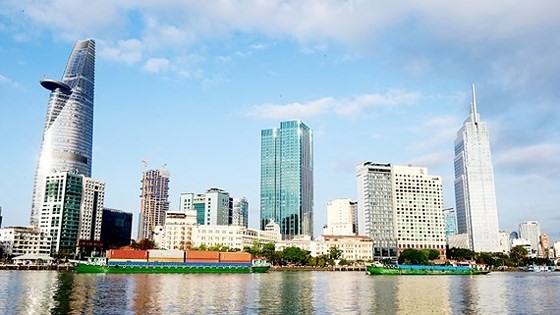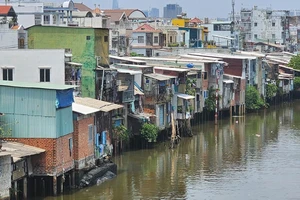
That is one of top targets of the adjusted HCMC region plan by 2030 with visions till 2050, approved by the Prime Minister and announced by the Ministry of Construction on January 23.
Attending a meeting to announce the amended plan was deputy chairman of HCMC People’s Committee Tran Vinh Tuyen together with leaders from the ministry and relevant agencies.
According to the plan, HCMC region stretches over 30,404 kilometers comprising seven provinces and city namely Binh Duong, Binh Phuoc, Tay Ninh, Long An, Dong Nai, Tien Giang, Ba Ria-Vung Tau and HCMC. Current population is over 18.7 million people. The number will approximate 24-25 million by 2030 and 29-30 million by 2050.
The region will develop into a modern economic region and the large economic hub of Vietnam and Southeast Asia, concentrating in fields such as finance-commerce, science-service, hi-tech industry and intensive industry with high specialization, high quality education-training and health in Southeast Asia.
Of these, HCMC will be the nuclear of the region and motive power for the region and the country’s economic development, playing significant role in the region with strong international links.
The city must face and solve many barriers especially climate change and sea level rise to reach the new high in the region and the world.
Therefore, representatives from the Ministry of Construction said that despite keeping the principle of multi-center structure, the new plan has some important adjustments in development strategy compared to the plan approved in 2008.
Specifically, key growth poles and development corridors must be abbreviated to ensure economic development and climate change adaptation. The plan gives priority to compressed instead of widespread urban development, which will be limited in low lying west and southwest areas where are susceptible to flooding.
Dynamic growth poles must be built in high grounds and development will be encouraged in the north and the east.
Deputy Minister of Construction Phan Thi My Linh proposed provinces in the HCMC region to soon publicly announce the adjustments to ensure the plan’s implementation by all relevant sides.
She prompted them to review and change their construction plans to have socioeconomic development strategies and orientations as well as urban development programs suitable with the region plan.
Tan Son Nhat Airport to be expanded
According to the plan, Tan Son Nhat International Airport will be upgraded and expanded to increase its capacity to 40-50 million passengers a year and 1-2 million tons of cargo a year by 2030.
Long Thanh International Airport project will continue to be implemented according to approved investment phases.
HCMC not only plays the nuclear role of the region but also has the relationship and impact to the development of the Mekong Delta. So Ms. Linh proposed the city to review some field plans which have not been approved such as drainage, garbage and traffic plans because they largely affect the city’s infrastructure development framework.
Deputy chairman of HCMC People’s Committee Tran Vinh Tuyen said that the city and neighboring provinces' development has met with lot of difficulties in infrastructures and connectivity.
The region plan with rational assignments will determine strengths of each locality, region and especially the center role of HCMC so that each locality can develop fast, sustainably and connect with each other in allocating resources in fields which they have paid much attention to such as tourism, culture-education and hi-tech. There must be thrifty solution to adapt to climate change for the entire region.
The region plan will be a legal basis for the city to implement some field plans more suitably. Therefore, the city will inform residents of the adjusted plan, get their opinions and encourage them to supervise the implementation in practice, he added.
























